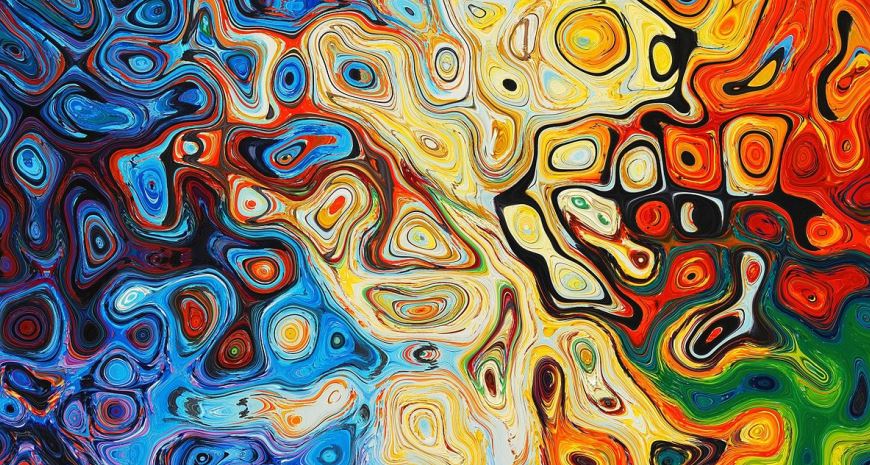Over the past few years art market statistics have confirmed that an increasing number of people have been investing in fine art. It’s only natural for someone that is new to the art-buying process to have questions. Artalistic, a leading virtual gallery, brings you expert tips that will help you purchase the perfect work of art.
Questions to consider before buying art
What are your objectives in buying this artwork?
In general, there are two main reasons why someone would consider buying art:
- Investing: increasing and diversifying one's portfolio. Buying art can be an excellent long-term investment. One can think of it as being similar to purchasing stocks or real estate. If you're patient, a piece of art like a painting can increase in value over time. If you lack the funds to purchase a work of art you can always look into art leasing, which is becoming increasingly popular among companies and individuals alike.
- Visual enjoyment: wanting to be surrounded by beautiful objects is an important factor to consider. Embellishing your living space is important. In this respect, art becomes a means of self-fulfillment and can even boost your self-esteem while quenching your thirst for beauty and instilling your space with your own distinctive style.
Should you focus on well-established artists?
One might assume that an original work of art by a famous artist might entail making a large investment. However, in reality, buying a work of art is actually well within most people’s budget.
You may be surprised to find out that many paintings, photographs and sculptures are available for a few hundred euros, or even less. Emerging artists should not be underestimated - quite the contrary! For example, Monet's famous Impression, Soleil Levant, painted in 1872, was first sold for a few hundred francs in the middle of the 20th century. Now it is one of the most coveted and sought-after paintings in the world!
Above all, let your heart be your guide. A work of art’s originality or the artist’s iconoclastic vision can also be considered. If your budget doesn't stretch to the same volume as your heart, don’t forget to look at prints that are part of a limited-edition run. These can also accrue value over time.
Buying a work of art: finding out an artist’s worth
The art world can be a frightening place for newcomers, especially when it comes to buying art. However, with a bit of enthusiasm, curiosity and a little practice, you'll soon become familiar with the fascinating world of art.
For example, if you want to find out how artists are rated, you can search for media that specializes in publishing yearly reviews. Keep your eyes open or find knowledgeable people who can take the time to keep you abreast of what’s going on in the art world. Visiting art galleries is a good place to start: you might meet real enthusiasts who can most likely give you excellent advice.
Buying art: Don’t forget about certificates of authenticity and provenance
The seller or gallerist’s reputation is of paramount importance when you are planning on buying art.
Every piece art must be sold with a certificate of authenticity. This will enable you to determine its history and verify its authenticity. Such a certificate includes the following information:
- The piece’s title
- The artist's name
- The year it was created
- Where it was created
- Technical characteristics: dimensions, materials and media
- The words "original" or "limited edition"
If you are buying a work of art, be sure to ask for a certificate of authenticity. If necessary, consult a professional who can attest to its authenticity. This also applies to buying art online, a sector which has exploded in the past few years.
What are the optimal conservation conditions?
Before buying art, you need to think about where it will be stored and check that all the good conservation conditions will be respected. Some works of art are extremely fragile so it is important to take care of them properly.
Careful attention must be paid to the following:
- Where the piece will be on display in terms of exposure to sunlight and how bright the room is.
- The space’s humidity and temperature (on average between 45 and 55% humidity and 20°C/68°F). Avoid damp locations or those near radiators or fireplaces.
- How you will hang the piece? Can your hanging materials and wall withstand the weight of the piece?
Do you really need to insure a painting or sculpture?
When buying art that is valuable, it's advisable to have it insured. You can choose between the following options:
- Multi-risk home insurance (MRH), which generally covers a value of €3,000 for works of art.
- Declared-value art insurance.
- Insuring works of art at approved value - a process that requires an expert appraisal.
Now you're ready to buy a work of art. If you'd like more detailed information, feel free to contact our team of experts, who will be more than happy to answer all of your questions! Browse through our galleries of paintings, sculptures, photographs and drawings to find a piece that sparks your interest! Thank you for following our blog and see you soon for the latest art news, with Artalistic!
 English
English Français
Français


You must be logged in to post a comment.
Click here to log in